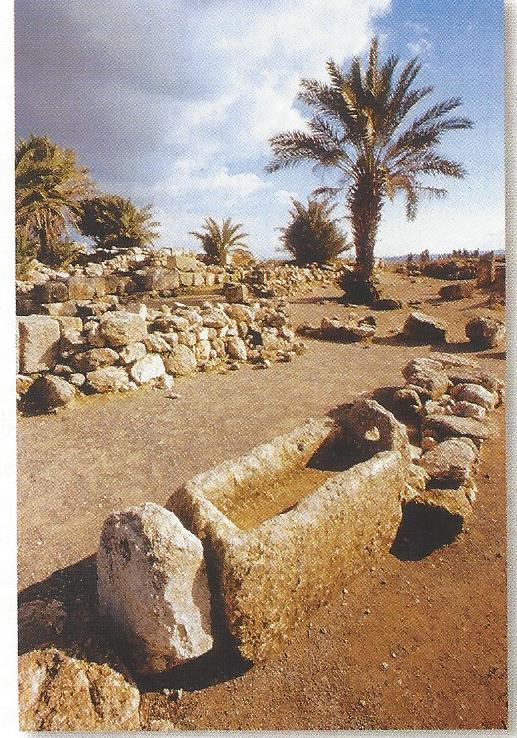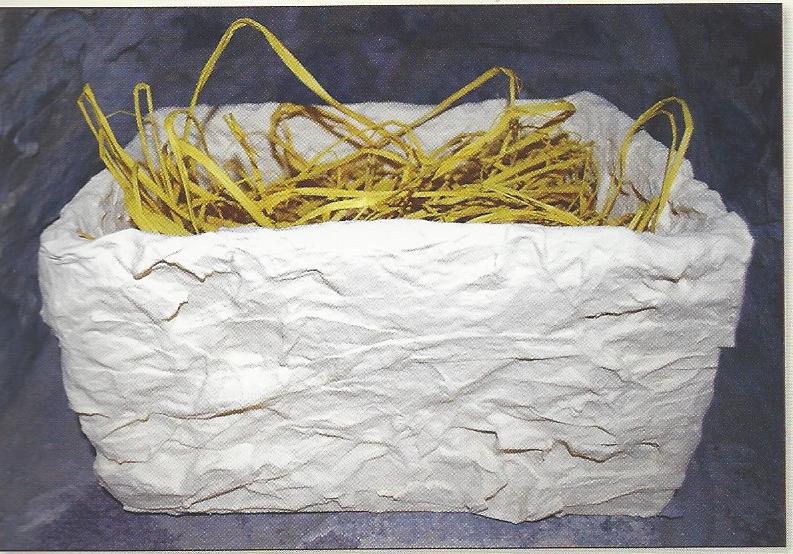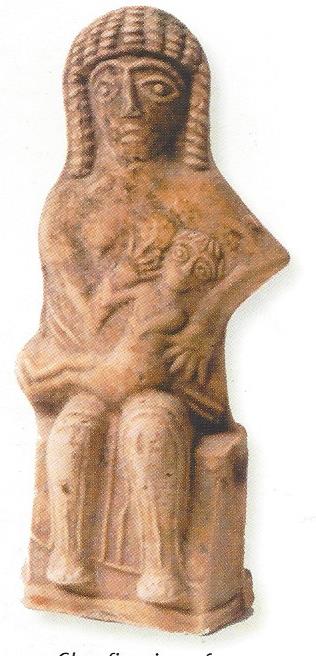The Authentic Manger Challenge
The Authentic Manger Challenge
This Christmas, change up your nativity scene. Hint: no carpentry required.
Thanksgiving is over, and ’tis now the season when Luke 2, the narrative of Jesus’ birth, will start resonating in homes and churches. Scripture says: “And she brought forth her firstborn son, and wrapped him in swaddling clothes, and laid him in a manger; because there was no room for them in the inn.”
The scene has been depicted persistently over the generations, from Great Masters to coloring books. But what did the manger really look look like? The magnificent Church of the Nativity, built and rebuilt over the generations, gives us no hint; an elaborate altar stands at the traditional site of the birth today. And as it turns out, the persistent image of a wooden manger that has made its way into minds and hearts via Christian art comes not from the Holy Land at all, but from well-forested Europe, where basically everything was made out of wood.

But in the rock-rich Holy Land, at the beginning of Christianity and for millennia before, stone was the building material of choice. That was certainly true for mangers, of which many have been found in archaeological excavations, most memorably, for people who have visited Israel, at Tel Megiddo National Park.
A manger is basically a feeding trough. As you can see from the photo, it’s a perfect size for a baby’s crib. Interestingly, in British English, a feeding trough is even called a crib. Fresh straw would have been the perfect bedding, too under the famous no-room-at-the inn circumstances.
I never miss the opportunity to bring alive the nativity story this way for people who come with me to Tel Megiddo National Park. That story is far from the subject of most of a visit to this famous spot. But standing by the ancient manger set up near “Solomon’s Stables” is where I always appeal to craft-minded folk in the group: Change up your nativity scene with a faux stone crib next Christmas!
Finally the opportunity came for me to pitch my project to a wider audience. In the activity section of the chapter on family life in my book Teach it to Your Children: How Kids Lived in Bible Days, there are do-it-yourself instructions for families to make their own authentic manger – the kind Mary might really have laid the baby Jesus in – out of paper maché that you can make look like stone. And now it’s your turn. Take the challenge!
My husband Arik and I make this model manger out of a shoe box over a few weekends. If you need a more life-size version, you’ll need a bigger carton. And you’ll need to start soon because the layers of paper maché that serve as your straw will take time to dry. If time is short and paper still moist, a hair dryer should help!

Instructions
For a shoebox-sized manger we used one cup of flour and one cup of water per session. We added 1/2 tsp salt into the mixture (as we know from several biblical references, salt was a preservative in ancient times; newborns were even rubbed with it according to Ezekiel 16:4). During your first few sessions, you’ll want to stuff torn strips of newspaper about 2 inches wide, dipped into your flour mix, into the corners of the box so it won’t be too square. Let it dry well. Once you’re done stuffing (that should take about two sessions), start covering the box, inside and out, with the strips dipped in the flour mix. When you’ve got your box all covered you can paint it the beige-tan color of Holy Land limestone. We used three layers of paint and then applied a layer of acrylic varnish to make it last as long as possible. Finally, insert your “straw,” available in craft stores, and you’re ready to display your authentic Nativity Scene!

Have a wonderful Christmas!
You can find detailed instructions on how to make your authentic Bible-time manger in my book, Teach it to Your Children: How Kids Lived in Bible Days, p. 67.


